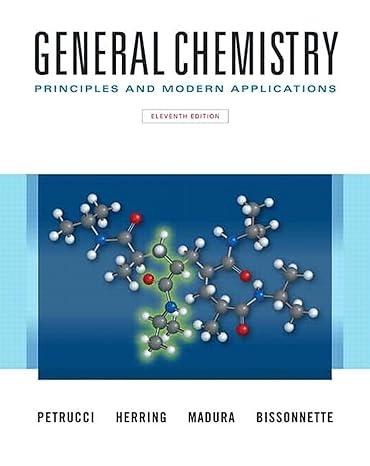In 1922 Donald D. van Slyke (J. Biol. Chem., 52, 525) defined a quantity known as the
Question:
In 1922 Donald D. van Slyke (J. Biol. Chem., 52, 525) defined a quantity known as the buffer index: β = dcb/d(pH), where dcb represents the increment of moles of strong base to one liter of the buffer. For the addition of a strong acid, he wrote β = -dca/d(pH). By applying this idea to a monoprotic acid and its conjugate base, we can derive the following expression:
![B = 2.303 Kw [H3O+] + [H3O+] + cKa[H3O+] (Ka+ [H3O+])2/](https://dsd5zvtm8ll6.cloudfront.net/images/question_images/1700/6/5/3/202655de89261ff71700653201342.jpg)
where c is the total concentration of monoprotic acid and conjugate base.
(a) Use the above expression to calculate the buffer index for the acetic acid buffer with a total acetic acid and acetate ion concentration of 2.0 x 10-2 and a pH = 5.0.
(b) Use the buffer index from part (a) and calculate the pH of the buffer after the addition of of a strong acid.
(c) Make a plot of β versus pH for a 0.1 M acetic acid buffer system. Locate the maximum buffer index as well as the minimum buffer indices.
Step by Step Answer:

General Chemistry Principles And Modern Applications
ISBN: 9780132931281
11th Edition
Authors: Ralph Petrucci, Jeffry Madura, F. Herring, Carey Bissonnette





